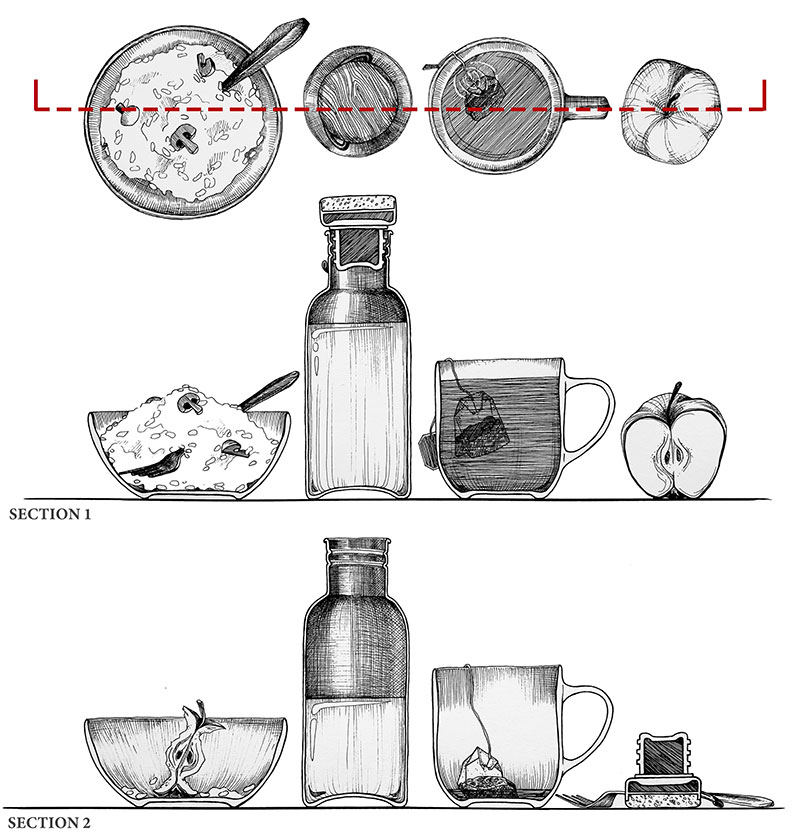BA1
Histories of Architecture
We begin in Humanities 1 with the discussion of architectural history. The histories of architecture are plural and, rather than presenting a singular narrative, we show the diversity of approaches to this topic drawing on expertise from staff from across the school. No history of architecture can be completely comprehensive, so we aim to equip students with the skills and questions to conduct their own research. Each lecture consisted of a survey of architectural history in its own right, dedicated to the following topics: the vernacular; architectural history; metaphor; the (human) body; materials; class; health; spirituality; schools; trade; labour; authority; and towers.
BA2
Thinking Through Drawing
Humanities 2 continues with a study of architectural drawing. The lectures were each framed by a certain convention and considering how they allow us to think: thinking orthographically; thinking in parallel; thinking in perspective; thinking in gesture. The lecture series is partly a history of drawing, but is also a theory of why we continue to draw according to the organising principles of orthographic projection and other conventions. Students produced portfolios of drawings exploring the qualities of copying and tracing, sequences and layers, translations and analyses of drawing, all accompanied by reflective text on the processes involved.
Writing the City
In BA2, Humanities expands its focus to more contemporary concerns, looking at the wider responsibilities of architecture. We do this by considering the place of architecture in the city: the complexity introduced by an urban context. We looked at a wide range of global cities in this lecture series as a way of discussing the appropriate architectural and other theories. Humanities 2 addresses the professions of architecture and urban design and how it can have an impact beyond the bounds of its own sites; architecture in the city can have unexpected political and social implications, questioning the ethics of architectural practice. Lecture topics included: Revisiting the Retroactive Manifesto; Redrawing the City; Cities and Nature; Cities and Technology; Taking a Line for a Walk; How Sanja Matsuri Makes Asakusa; Spontaneous Urbanism; Cities and Culture; Prefigurative Urbanism and African Urbanism. The lectures approached cities including Seoul, Jakarta, Tokyo, Guayaquil and Accra.
Architecture, Climate and Society
The BA2 unit on Architecture, Climate, and Society takes a key contemporary thematic that is at the forefront of academic and professional activities in architecture: critically understanding the climate emergency. Architects are well positioned to creatively engage with the demands that climate change places on the profession, but it can be too easy to concentrate on materials and technology without reference to the social, political and ethical issues posed by the climate crisis. This unit helps students to understand the importance of developing a theoretically informed position when addressing the climate emergency.
BA3
BA3 Humanities is a taught programme offering the third-year bachelor students a range of electives of in-depth specification on topics in architecture humanities. The subjects of the different electives reflect architectural history and theory as they inform design practice. The BA3 Humanities electives thus allow for a thematic study within individual specialisms to be placed within a robust understanding of architecture as a discipline and profession. Conceived as research-led teaching, the electives are developed through a series of weekly meetings and tutorial sessions on essay writing. Humanities is here understood as a broad umbrella within the discipline of architecture and is approached through a set of readings, presentations, and other tasks, introducing fundamental tools and apparatuses for inquiry. Each BA3 Humanities elective is assessed by the submission of a portfolio of both an essay and an appendix, that can take different forms and include both group and individual work.


